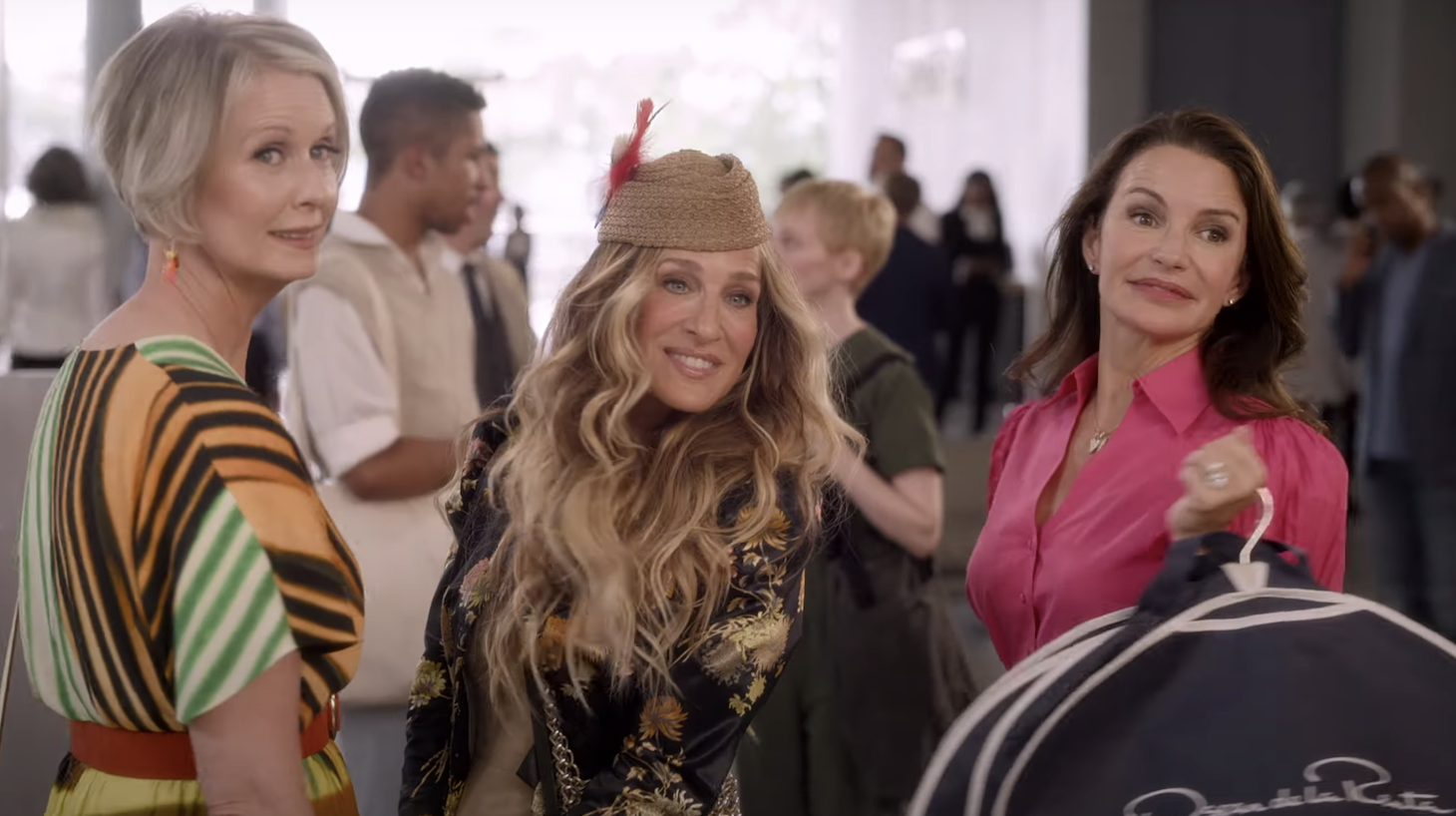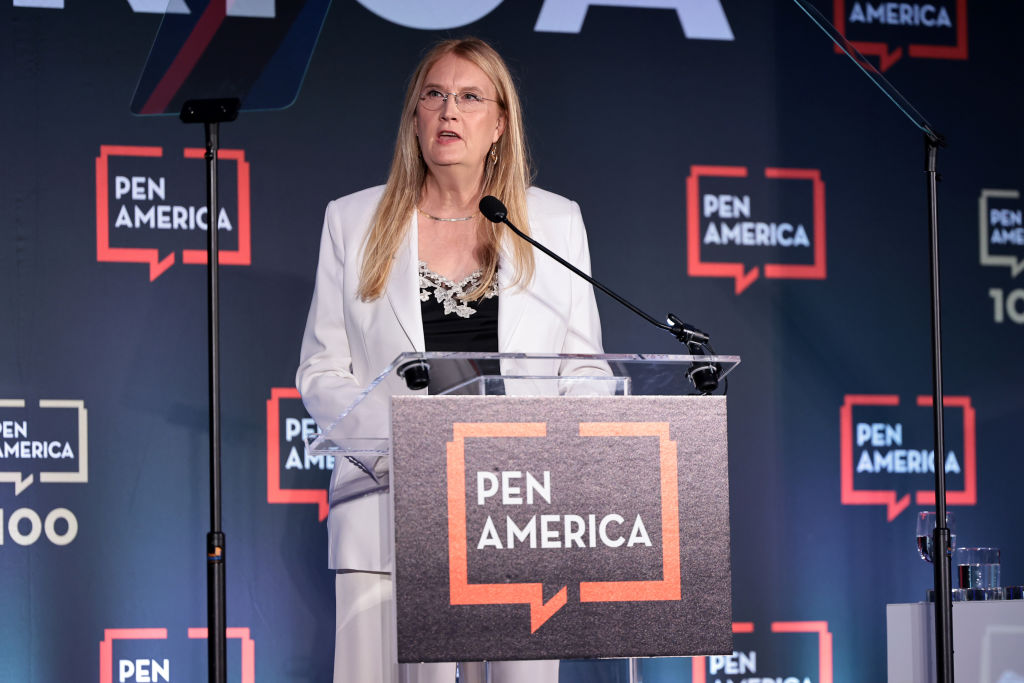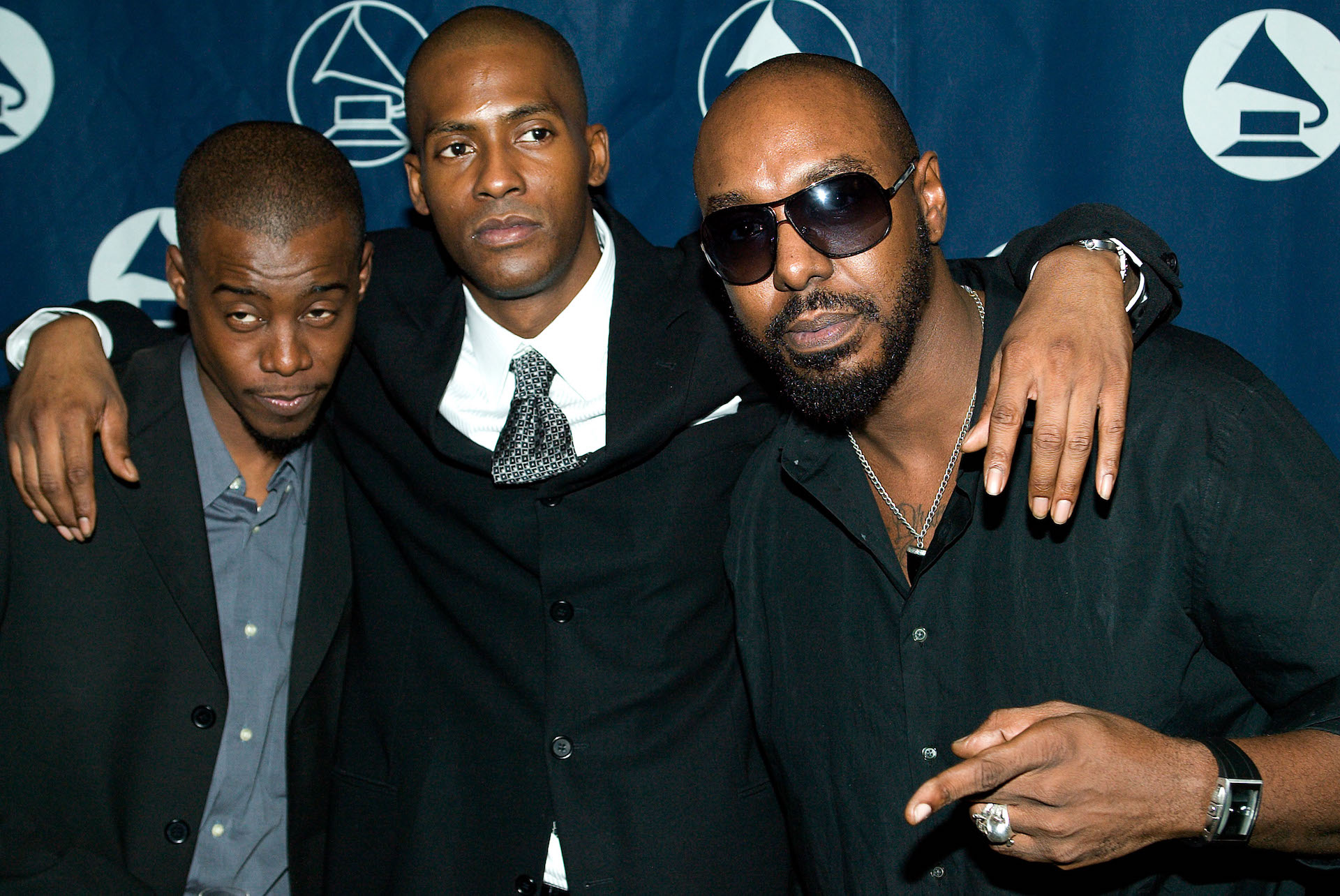And Just Like That, I Watched An Entire Season Of ‘And Just Like That…’
10:31 AM EST on February 3, 2022

Every week for the past two months, I have watched the Sex and the City spinoff And Just Like That... And every week I have felt the same sense of befuddlement. At myself. Why am I watching this? I think, every week, for the full hour I am watching it. Why am I waiting for this? I think, every week, in the days before I watch it. “What the fuck is this?” I asked social media, somewhat alarmed after half a season had gone by, before hearing the question echoed back to me from other women, mostly my age. Why do we keep doing this to ourselves, we all asked in unison with slightly deranged laughter?
I tried to explain And Just Like That... to a friend, and this is what came out: It’s like you took the characters from 1998 out of circulation and aged them up—20 years physically, 50 years mentally—and then plopped them back into the present day without explaining anything that has happened in the intervening years. There has been some mild grumbling about one of the husbands being treated like a doddering old fool, but none of the main characters in this series seem any less doddering to me. In Sex and the City, these women—quirky columnist and narrator Carrie Bradshaw (Sarah Jessica Parker, back like she never left), buttoned-down lawyer Miranda Hobbes (Cynthia Nixon, post-politics), preppie art dealer Charlotte York (Kristin Davis, oddly subdued) and PR femme fatale Samantha Jones (the dearly missed Kim Cattrall, who savvily chose not to return this time around)—were once the more mature if fluffier Girls of the '90s. Their bottomless bank accounts (Carrie’s “poverty” never got in the way of her haute couture or a Michelin-star meal) presented a New York only accessible to the incredibly rich, but implied a New York for the independent everywoman, who always got her man.
Now these same women are stumbling around Manhattan like a gender-flipping reboot of Cocoon even though none of them have even hit 60 yet. It’s like the past hedonism, upon which this franchise was supposedly built, never happened. Or the characters have some kind of collective amnesia. I don’t care who you are, it’s incredibly hard to imagine that in middle age you would FORGET how to finger someone if you’ve done it before. (It’s called muscle memory.) But in episode seven of And Just Like That..., Miranda’s husband of a million years, Steve (a hotter-than-ever David Eigenberg, despite the show’s attempt to make his hearing loss his defining feature) appears to paw at his wife’s vagina like a baby bear, cooing, “I’m a little rusty … Is that right?” In the previous episode, Carrie and Miranda express gleeful shock at Charlotte’s disclosure that she still gives her husband blow jobs. “Is he dying, or something?” I’m sorry, I couldn’t help but wonder, had these women just been doing missionary the whole time?
No wonder Che Diaz (Sara Ramirez), the non-binary “comedian,” only needs a couple of fingers to get Miranda to upend her entire life. I’m going to thank writer Samantha Irby for that particular scene. If you know Irby’s writing, you’ll know she has a knack for wringing hotness even out of the most absurd situations. And the moment Che gets digital with Miranda in Carrie’s kitchen—while the hyper-narcissistic post–hip surgery sex writer is forced to piss into a bottle because of it (incontinence, also very on brand for Irby)—is hands down the hottest of the series. It’s perhaps the only hot scene to be honest; one Irby cannot correct an entire pre-existing machine built around Boomer sex.
There’s no reason for And Just Like That... to be this anticlimactic. Three of the original writers—series developer Michael Patrick King as well as Julie Rottenberg and Elisa Zuritsky—have returned, which made me wonder if 20 years ago I had just missed their ham-fisted handling of life’s intersections, because of my own ham-fisted handling of life’s intersections. And … not really. First of all, over six seasons, we’re talking about a literal handful of times that anything outside these women’s charmed lives is “wrestled” with, and even that is stretching it. That is the reason Sex and the City is so addictive—it’s a quick high. This is a show that introduces a class divide, between Miranda’s Ivy League attorney and Steve’s bartender, and then has Carrie voicing over it, “I wondered, was New York really any different from New Delhi? Had our class system been replaced by a caste system? And, if so, can we date outside our caste?” Completely ignorant and idiotic, but completely within the tone of a bubbly show that waves away anything deeper than a split stiletto or an errant orgasm as swiftly as a stolen puff of cigarette.
Critics have questioned whether a gay white sexagenarian like King can meet the current moment, but he couldn’t even meet the last one; it’s just that anyone who would have complained would have also been ignored at the time. Sex and the City used gay white men and gay-white-man placeholder Samantha to upset the conventions of gender and sexuality but wasn’t particularly bothered with upsetting the status quo itself. So, when Carrie dates a bisexual man in season three, she grouses, “When did this happen? When did the sexes get all confused?” only to conclude that she is too old to play the “game.”
And that’s the point—in the original Sex and the City it is all a game. It’s all over Carrie’s bouncy voiceover, the bouncy music, the bouncy camera, all of it shot through by Samantha’s steamy interventions. “I don’t see color, I see conquests,” she says in season three and you laugh before realizing she’s not really joking. Race doesn’t affect Samantha, and how it affects anyone else only matters insofar as it affects her, which is to say only in forgettable spurts—such as the black guy she dates who is under the thumb of his sister, or the black trans sex workers who disrupt her sleep hygiene (“Half man, half woman, totally annoying”—Jesus Christ). In this series, Asian women work at nail salons or do takeout, or role play as servile housekeepers, and LGBTQ people serve as confirmation of the main characters’ conservatism. And none of this matters because the froth of a well-placed tutu and a cupcake and the sparkle of a cosmopolitan and a downtown fuck are what its devotees remember. And to be frank, I would take Sex and the City’s oblivious, outdated confection over the dour hyper-conscious tedium of And Just Like That... any day.
The paper-thin transgression of Sex and the City was all around white women’s sex lives. Today, in a far more transgressive culture, there’s nothing left to subvert through these characters. So, those women have now become the punchline. Everything is about age and without the effervescent script or direction or Samantha to render it playful, we have a trooper like Parker trying to carry its lightness on her back—her screwball delivery is welcome even with less joyful writing—but the weight of the world comes crashing down every time. Everything that was once treated glibly because it was not the point is now the show's only point. Every word has been vetted; every line is constipated. While the original mandate was to have sex like men, the new one is, “We can’t just stay who we were, right?” And that apparently means a bunch of sadsacks having a “woke moment” alarm pulled on them at every turn. I do feel for Ramirez, who plays Carrie’s boss, the host of XY and Me (“The podcast that talks about gender roles, sexual roles and cinnamon rolls,” God save us), who is stuffed with a mouth full of progressive pedagogy, including their own intro: “I am Che Diaz, your host and queer non-binary Mexican-Irish diva representing everyone else outside these two boring genders.”
Yes, it is boring. The women who were once painting the town tulle, making the most of their age and success, are now trapped like butterflies in the domestic sphere. There’s of course nothing wrong with having a husband and a bunch of kids, except that none of these characters have enough depth to make that life interesting—let’s be real, half their personalities were the things they wore and the places they went and the people they did. Now the rare soberness of six seasons is crammed into 10 episodes.
Within about five minutes, Carrie loses two best friends and a husband—Chris Noth's Big was killed off before a series of sexual assault allegations against him came to light—and her character is essentially reduced to three words, “My husband died.” (Her bons mots have also been reduced to execrable exchanges, like: “Young love.” “Not so young.” “Not so love.”) Charlotte has gone from art dealer to curator of her own home with newly acquired accessories including a black best friend (Nicole Ari Parker, trying her best) and a kid who eschews labels. But Miranda bears the brunt of all this modernity. She has been saddled with an extreme case of white guilt and gone from corporate lawyer to human rights student, and has in the interim lost her mind. I don’t remember Miranda ever being a rube but here she is shocked her professor has braids and acts like a drooling undergrad when she hears Che’s LGBTQ 101 lecture (it’s actually a comedy set called, obviously, “Check the Box”). “I think I was just so worried about saying the wrong thing in this climate that I said all the wrong things,” she says at one point. Unfortunately, I don’t think And Just Like That... is self-aware enough for that line to read as meta-commentary. Sarita Choudhury’s real estate broker Seema Patel, a Samantha replacement, offers a brief flicker of reprieve but she is neither bawdy enough nor campy enough to pull the rest of the show up.
And Just Like That... set itself up to fail by being afraid of its own nostalgia. Sex and the City was not only defined by what now plays as unseemly opulence, but a particular brand of white feminism that could be read as progressive at the time, but not always, and less and less as time progressed. In its attempt to atone for Sex and the City’s now glaring sins, And Just Like That... replaces much of what also made the show so seductive with cloying gestures that misunderstand the present and utterly fail to redeem the past.
While I was never much of a fan of Sex and the City, when I moved to New York a decade after first seeing it, I couldn’t help but have those four women on my mind. And because their fantasy life had become mine by cultural osmosis, I felt the same sense of betrayal that a lot of women probably did when reality did not match in the end. Perhaps the impulse to watch And Just Like That... is the same impulse I felt to think of Sex and the City all those years ago—it is nostalgia for the aspiration of my youth, before mature reality had hit. And Just Like That... offers only further betrayal: the sanitization of an outdated fantasy. That is to say, not only do women my age have to live with the repercussions of our past actions, And Just Like That... also subjects our past dreams to retroactive correction.
In that case, one of the last images of its finale is surprisingly fitting: Carrie, standing in the middle of a bridge in Paris, resplendent in fuchsia pink satin gloves and a mess of orange pleated taffeta, opens her sparkling purse to reveal it is full of nothing but ashes.
If you liked this blog, please share it! Your referrals help Defector reach new readers, and those new readers always get a few free blogs before encountering our paywall.
Stay in touch
Sign up for our free newsletter




